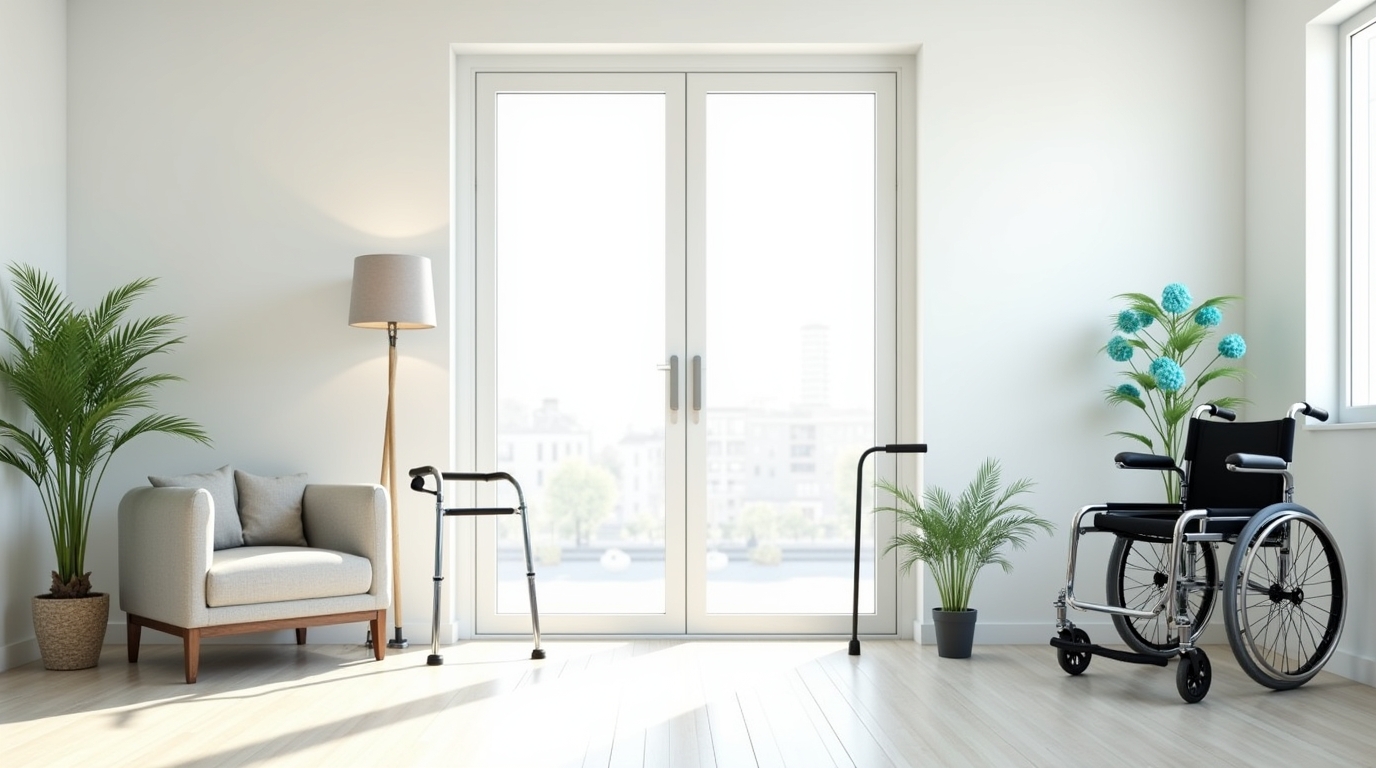In today’s fast-paced world, the concept of home has evolved far beyond just being a place to rest. It has become a sanctuary where comfort, functionality, and style intersect. One of the most significant shifts in residential design focuses on improving mobility and ease, especially for people of all ages and abilities. Modern design has risen to the challenge by seamlessly integrating accessibility with aesthetics, allowing homes to be spaces that empower independence and enhance quality of life.
In this post, we’ll explore how contemporary design innovations and independent living products are shaping homes that prioritize mobility and ease, making day-to-day living simpler and more enjoyable.
The Changing Needs of Modern Living
A generation ago, the term “accessible design” often conjured images of clinical, institutional spaces with ramps, grab bars, and minimal décor. These spaces prioritized function but lacked warmth or style, sometimes even stigmatizing users.
Today, the approach is much different. The demographic landscape has shifted — with an aging population, people recovering from injuries, and individuals with diverse mobility needs, there’s a growing demand for homes that cater to independence without compromising on beauty. Moreover, younger generations are increasingly aware of universal design principles, which create environments usable by everyone, regardless of age or ability.
Modern design embraces this challenge by blending accessibility features with smart, stylish solutions that fit effortlessly into everyday life.
Key Principles of Mobility-Focused Modern Design
1. Universal Design: A Foundation for Everyone
Universal design is the guiding philosophy behind many modern homes emphasizing ease of movement. Its goal is to create environments that work for all people, regardless of their physical capabilities. This includes considerations like:
- Wide doorways and hallways to accommodate wheelchairs or walkers
- Zero-step entries that eliminate thresholds and improve accessibility
- Lever-style door handles instead of knobs for easier operation
The beauty of universal design lies in its invisibility. Instead of obvious modifications, these thoughtful features blend naturally into the architecture and décor, ensuring the home remains inviting and functional.
2. Open Floor Plans and Clear Pathways
One of the hallmark trends in contemporary homes is open-concept living. Large, unobstructed spaces not only foster social interaction but also provide ample room for mobility aids like wheelchairs or scooters.
Minimalist design principles complement this by reducing clutter and using multifunctional furniture, which frees up space and makes navigation easier. Clear sightlines and smooth flooring surfaces enhance safety and reduce fall risks.
3. Smart Home Technology Integration
Technology has revolutionized how we interact with our living spaces. Voice-activated assistants, automated lighting, and smart thermostats contribute significantly to ease of use, especially for those with limited mobility.
Some specific examples include:
- Automated doors and window blinds controlled remotely
- Motion-sensor lighting in hallways and bathrooms to prevent accidents
- Smart kitchen appliances that reduce the need for physical exertion
These innovations are often seamlessly incorporated into home design, maintaining aesthetics while adding convenience.
Practical Design Elements That Enhance Mobility
Flooring Choices That Support Movement
The choice of flooring can have a profound impact on mobility and safety. Modern design favors materials that are smooth, non-slip, and easy to maintain, such as:
- Hardwood or laminate flooring with matte finishes
- Large-format tiles with textured surfaces to prevent slipping
- Low-pile carpeting or area rugs secured firmly to the floor
Avoiding high-pile carpets or uneven surfaces helps prevent tripping and makes it easier for wheelchairs and walkers to roll smoothly.
Thoughtful Bathroom Modifications
Bathrooms often pose the greatest challenges for mobility. Modern designs incorporate:
- Walk-in showers with no thresholds
- Grab bars styled as towel racks or decorative elements
- Adjustable-height shower heads and handheld sprayers
- Floating vanities for wheelchair access underneath
These features prioritize safety without sacrificing a spa-like feel. Designers use sleek materials and finishes to ensure bathrooms remain modern and inviting.
Kitchens Designed for Accessibility and Style
Kitchens are the heart of the home, and making them accessible improves independence. Modern designs include:
- Lowered countertops or adjustable-height surfaces
- Pull-out shelves and drawers for easy reach
- Side-opening ovens and induction cooktops for safety
- Touchless faucets and smart appliances
Ergonomic placement of tools and appliances reduces unnecessary bending or stretching, promoting ease and efficiency.
Furniture That Supports Movement and Comfort
Modern furniture designers focus on pieces that combine aesthetics with ergonomic support and mobility aid. Some popular features include:
- Chairs and sofas with adjustable heights and firm but comfortable cushions
- Recliners with built-in lift mechanisms to assist standing
- Lightweight, easy-to-move tables and storage units
- Modular furniture that adapts to different spaces and needs
Materials are selected for durability and ease of cleaning, while design lines are kept simple and elegant.
Outdoor Spaces That Encourage Independence
Mobility-friendly design extends beyond indoor spaces. Modern patios, gardens, and entrances incorporate:
- Smooth, non-slip pathways wide enough for mobility aids
- Raised garden beds for easy access without bending
- Seating areas with sturdy, supportive furniture
- Automatic gates and lighting for safety and convenience
These outdoor features help residents enjoy fresh air and nature with minimal assistance.
Case Study: A Modern Mobility-Friendly Home
Consider the example of a recent home renovation designed for a retired couple who want to maintain their independence. Key features included:
- A ramped entrance disguised as an elegant walkway
- An open kitchen with lower countertops and pull-out drawers
- Smart lighting throughout, controlled via voice commands
- Bathroom with a roll-in shower and grab bars styled as chrome accents
- Wide interior doors and corridors with clean, contemporary lines
- Furniture selected for support and flexibility, including a recliner with lift function
The end result was a home that looked modern and stylish but was entirely focused on promoting ease of movement and safety. The couple reported feeling empowered and comfortable, with fewer worries about daily tasks.
Future Trends: Where Mobility and Design Are Heading
As technology and materials continue to evolve, we can expect even more innovative solutions in home design:
- Robotics and AI: Assistive robots could handle tasks like fetching items or monitoring health.
- Adaptive materials: Furniture and fixtures that change shape or height based on user needs.
- Sustainability: Eco-friendly materials that also support easy maintenance and longevity.
- Personalized environments: Smart homes that adjust lighting, temperature, and accessibility features automatically.
Designers and manufacturers are increasingly collaborating with healthcare experts and users to create environments that adapt with people’s changing needs.
Conclusion
Modern design’s greatest achievement in the realm of mobility and ease is its ability to blend function with form. It challenges outdated stereotypes of accessibility by creating homes that are beautiful, welcoming, and empowering.
By embracing universal design principles, integrating smart technology, and focusing on thoughtful, practical details, today’s homes are places where independence is nurtured. Whether for aging adults, individuals with disabilities, or anyone seeking a more comfortable lifestyle, these innovations transform living spaces into true havens of mobility and ease.
If you’re considering adapting your home or designing a new one, remember that mobility-friendly design doesn’t mean sacrificing style. On the contrary, it opens the door to thoughtful, innovative solutions that make everyday living easier and more enjoyable for everyone.


